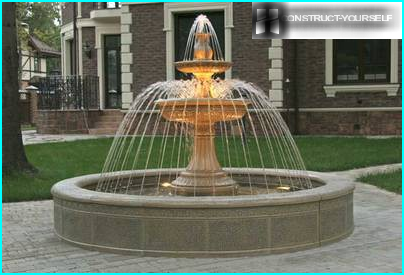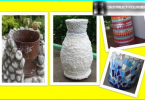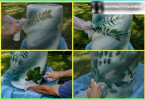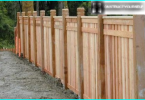
Moss – the inhabitant of the humid and shaded forest, so we rarely encounter it in life and know very little about this amazing plant. In fact, once upon a time he was able to replace medical bandage and specify the path to a mushroom. Proponents of sustainable living and still use the dried plant for home insulation. But we are more interested in the decorative side of the moss: can I use it in landscape design and independently to grow in the country.
The contents
«Velvet carpet» as a decorative ornament
Mosses and unusual in its structure and way of life. Unlike the rest of the country representatives of flora – trees, grasses, flowering plants – they have roots and flowers, however, the outgrowths replacement sheets have a unique decorative effect.
A variety of colors, from bright green to red-brown allows you to create unusual velvety lawns, decorate Alpine gardens and rockeries, «to age it» brick fence, tree stumps and stone edging ponds
The first to use moss in the landscape design attentive to detail Japanese. They noticed that the miniature thickets in a comfortable environment to live and develop no worse than garden plants, but their appearance in some cases Eclipse them.
In the 14th century Japanese monks created a garden of mosses Saihoji, which, slightly modified, still exists.
The various types of mosses and lichens cover the small Islands, rocks, tree trunks, soil thick, multi-colored lawn, creating an atmosphere of peace and quiet
The tradition of using moss in the landscape design spread to Europe and then on other continents, in all regions where the climate is conducive to growing these special plants.
The most popular method of decoration suitable for a suburban area – the creation of mossy stone, which is part of the rock garden or rockery. Half covered with green velvet, the stone takes on a completely different appearance – a more ancient, mysterious, fabulous.
Mosses and lichens fit perfectly into the composition of coniferous forest trees: covering the lower part of the trunks, they also protect them from drought and overheating
From the point of view of decoration of large and small forms moss universal. It perfectly «ages» statues, vases, fountains and garden sculpture, located in the shade, but also serves as a great additional protection for roofs and gazebos. And of course, as a covering plant frame garden paths, small flower beds, ponds and banks of streams.
The secrets and rules of cultivation of moss
If you are an experienced florist and has learned how to grow flowers, care for the lawns and in the fall to gather a rich harvest of fruit, feel free to breed moss and decorate with it, country decor or fence.
To grow mosses or lichens can and novice designers, by understanding the basics of caring for unusual species of flora.
Where better to locate the garden of mosses?
As you know, the moss likes partial shade and plenty of moisture, so before buying decorative types in the store or an independent mining them in the woods, make sure that your country estate there is a territory that meet these requirements.
For example, it may be a small area of coniferous or mixed forests, in which grow pine, spruce, larch or fir.
As a rule, the branches of conifers create the necessary partial shade and the soil contains sufficient water. If the light of a pine grove situated on a dry sandy soil, it is not suitable for growing moss
The North side of the gazebo or the building where the sun peeks in early morning or late evening, also ideal for creating a velvet carpet. A small amount of UV can be useful – under the sun original leaves change color and acquire a lot of interesting shades.
Great place for a first landing moss – garden soil. A small sample of mossy turf, you can collect an amazingly beautiful lawn, shimmering in different colors.
Pads of moss can be planted under trees and in open but shaded areas – they form beautiful, unique in appearance lawn
If the country accidentally left the wetland area, the moss can be a key decorative element for decoration. In the center of the site placed a small pond with water plants and the banks of the pond and surrounding area is decorated with various types of plants bryophytes and lichens.
In such an extraordinary landscape blends harmoniously and a scattering of moss-covered rocks and mossy old cracked jug, decorative boat, utknuvshis nose in the soft mossy shore
Shade and moisture are not the only conditions of a successful growth of moss. Experienced florists recommend to examine the acidity of the soil. Ideally, the pH should be between 5 to 6.5 units.
Preparation of plant material
So, the plot for the behavior experiment, we found was to purchase the plant itself. Growing moss spores will not engage in, and find from Mature plants – at least in order to immediately see the result. We have two options available:
- buy some ornamental species at the flower shop;
- to go to the forest and to gather samples.
The first option is good because will be able to buy different colors and growth types. However, there is no certainty that they will settle in quickly at your site, so be sure to ask the seller where and in what conditions it was grown of the proposed items. Purchase moss energized fertilizers and treated against diseases in order to better settled after moving.
Plants from the nearby forest, most likely, will quickly get used to the new place of residence, if it is not like the former place of growth. Where can you find moss in their natural habitat? First and foremost, in the near coniferous forest.
Select the types that you will use: if you decide to decorate the stone, remove the pads from rocks, wood and moss decorate the trunks of trees, and the green carpet covering the soil, it is useful for design of the Alpine hills and lawns
Thickets of moss can be found in the city. Visit the old parks, ancient monuments of architecture with high stone fences, overgrown ponds will run into the thick green carpet.
Try to find as many different species, differing in height, color and growing conditions – experimenting with them, select a suitable for your site, the most resistant plant
Choose a Mature, healthy specimens that have bold color and density. Do not pluck the plants and not just cut off their tops. The right to dig a cushion from all sides and gently separate it from the basics.
Be careful not to damage the decorative top and bottom growths. The raised pads (pieces of mossy turf) gently fold in the basket, at the bottom of which is laid a damp piece of cloth. Filling the basket, be sure to cover the samples to fall on them to direct sunlight and moisture does not evaporate prematurely.
The nuances of proper planting moss
Let’s start with the fact that moss planted in the fall, survives much better. You can try and spring planting, and then analyze the difference of the results obtained. Perhaps your conditions are ideal for spring works.
The soil-filler it is better to prepare in advance. Make a nutrient substrate: mix equal parts humus and peat, add a small amount of clay and expanded clay. Peat and clay will help to retain moisture in the dry period.
If moss found in the woods or on the lake, take the soil on the old place of growth – it is ideal for adaptation into new territory
Next, execute the following steps:
- Take a bucket, a basin or other convenient receptacle, fill with clean (preferably key) with water and stacked layers of assembled or bought the mossy turf to nourish it with moisture before planting.
- If the place selected for landing, for your absence is covered with leaves or overgrown with weeds, removed all superfluous, to remain pure, «naked», free from thickets Piglet.
- The soil, the right features, just loose a few inches in depth (up to 5 cm, not more), otherwise, dig a small hole and fill them with pre-prepared substrate or soil brought from the forest.
- Planted pads of moss according to the invented pre-project, piecemeal, stripes, checkerboard. You can use the same color pieces, collecting solid Mat, but you can use colored fragments to create patterns and designs.
- For future expansion and updates it is recommended to leave a small interval between the planted Islands.
- Make sure that the pieces of turf tightly to the soil, leaving no air gap. However strongly pressed plants too, not worth it.
- After planting a fresh lawn need to be watered, and further to ensure that the humidity was at the required level.
As you can see, the rules of planting is pretty simple. Let us examine a few more features.
When planting moss on the Alpine hill will require additional primary fixation, to pieces of turf not peeled down. To secure them on the slope just stick thin sticks (suitable and toothpicks) or pieces of wire. Further, when the moss will grow, you can remove them
On old stumps well «nestled» only those instances that were removed from the same surface of rotting wood.
On the contrary, if you found in the forest, on rotten stump pretty spectacular and want to decorate them a country song, I’ll have to get the old man, piled the log or piece of wood rotting
Sometimes smooth mossy surface looks boring and monotonous. To enliven the composition, use of plants-partners. Suitable inhabitants of coniferous forests:
- ferns;
- horsetails;
- berries (cranberries, blueberries, strawberries, blueberries);
- low flowers (e.g., violets);
- any species of lichen, including reindeer moss.
These tips are good for the mossy lawn, and now look at how to grow moss on the rocks. This will require a mixture of pieces of moss, water and forest soil. Listed components are mixed in a blender, and then applied to the surface of the stone.
The first time will need extra care. You can cover the stone with foil for a few days, arranging from time to time a brief airing.
Beautifully and simply on a background of green carpet looks stone scattering, but it is better to choose not bright granite fragments, and the usual grey stones
I sometimes cook the mixture on a biological basis. The mossy turf to add a bit of sugar, yogurt, water, whipped and sticky mass coated with stone. Products fixed plant debris and play a role formula.
Instead of buttermilk you can use yogurt or beer instead of sugar – any sweet syrup. In this way not only decorate the stones, but stone fences, brick buildings, wooden fences.
With a good growth of moss on concrete, stone and wooden surfaces from its fragments to create graffiti, ornaments and «live» drawings
How to care for mossy lawns?
Like any lawn, flowerbed or rockery, manic requires regular care, which includes hydration, weeding, updating, and basic cleaning. Moss grows quite slowly: first the young pads will appear not earlier than 4-5 weeks after planting. They will occur near «parent» nests from all sides, or in one direction, the most favorable for the growth.
At this stage you have to adjust the size «Mat», if you need to have a strictly limited framework. While the young shoots have not grown, planting should be kept moist.
It so happens that the plants do not survive and die. Do not be afraid: pick up another kind and drop in the same place. Sometimes the moss dries up due to lack of moisture or strong sunlight. May abundant watering will revive dead plants
Unlike a traditional lawn, manicu not require regular grooming. However, monitor its cleanliness. Forest litter not only ruin the aesthetics of the decorative coating, but also cause the death of a moss or the appearance of unsightly «bald patches».
To protect the velvet Mat from the autumn leaf fall is very simple: spread on the entire area of the lawn a fine mesh, and then just roll it along with the leaves.
Popular types of moss for a country design
Pale green pads are round, slightly convex shape forms a moss Leucobryum.
Plants of the genus Leucobryum well take root and develop in the shade, on wet sandy soils, though a small amount of sunlight they won’t hurt
For dressing stone or concrete walkways, patios or low fences used Gipsovy moss. Before it in dried form used for insulation of wooden houses.
The genus Hypnum feels great on the rocky, wood and brick surfaces, although often used for creating lawns
All mushroom pickers familiar Kukushkin flax is a small plant vertically elongated bars. This Polytrichum ordinary, a bright representative of Japanese gardens moss.
Plants of the genus Polytrichum commune prefer damp forest soil or wetlands. In favorable conditions, the plant reaches a height of 35-40 cm
Moss green Dicranum is a real godsend for decorating stones and concrete fences.
Small round pads are a bright green shade has low height 4 cm, so is hold on vertical surfaces
Fern moss creates dense thickets and picturesque externally, its carved leaves are indeed reminiscent of a fern.
Thuidium just loves shady areas of the garden, and loneliness, so beware to make the composition of this moss and other plants that he will survive
Sphagnum is often used in indoor horticulture, and cultivation of ornamental plants in the garden. The stems of the plants added to flower the soil to make it more loose and soft.
Peat moss has a lot of bright hues – from pinkish red to rich green. The best places for its growth – banks of streams, artificial ponds and natural water bodies
As you can see, growing moss is not so difficult. His breeding does not require financial costs, and the benefit is incomparable: even in a dull off-season evergreen mats will delight you with bright colors.






